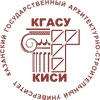About the authors
| First name, Middle name, Last name, Scientific degree, Scientific rank, Current position. Full and brief name of the organization, The organization address. | Vagapov R.F. – candidate of technical sciences, associate professor E-mail: This e-mail address is being protected from spambots. You need JavaScript enabled to view it Sinitsyn D.A. – candidate of technical sciences, head of laboratory E-mail: This e-mail address is being protected from spambots. You need JavaScript enabled to view it Oratovskaya A.A. – candidate of technical sciences, leading research scientist Tenenbaum G.V. – department head Scientific-Research Institute «BashNIIstroy» The organization address: 450064, Russia, Ufa, Konstituzii str., 3 |
| Title of the article | Construction materials based on industrial wastes of the Republic of Bashkortostan |
| Abstract. | Production of soda by widely spread at present ammonia way is accompanied by forming of a large amount of wastes in kind of slimes of distillable liquid. Solid phase of distillable liquid (TOS) is 25-60 % humidity slime containing fine particles mainly of calcium carbonate. By TOS burning at t = 850 - 9500 оC, a product is obtained with the properties similar to lime. On its base, with the simultaneous grinding with quartz sand the cementless lime-containing binder (IVC) can be obtained. The laboratory investigations showed the autoclaved cellular concrete, normal-weight concrete of M50-M200 grade, calcium silicate brick of M200 strength to be produced from the above binder with the technical properties similar to products of standard materials. In 1984-1986 at the Production Incorporation «Soda» (Sterlitamak city) there was the test process of production of one-hand expanded concrete blocks of autoclave curing with 600-700 kg/m3 density and 2,5…5,0 MPa strength based on cementless binder. The blocks were in complete conformance to requirements of GOST 21520-89. The raw material for the experimental investigations and test production was infiltrated slime extracted from slime reservoir. The slime was of high humidity and significant nonhomogenity by its composition that complicated the technology of production and decreased the quality of the end product. So, the most optimum is the use of slime directly from the production which is of homogeneous chemical composition after its dewatering at the special unit. This provides the maximum homogeneous end product (binder). The other large-capacity waste of industrial enterprises of Bashkortostan Republic is the ash of brown coal burning at Kumertau thermal power station. The experiments showed that when replacement of sand part (about 25 %) by fly ash in mortars M50-M100 and concretes to M200, the strength was increased by 20-50 %, in this case the ash served as the mineral plasticizer that amended the workability of mortar and concrete. Without strength and cement quantity decrease, to 50 % of sand can be replaced by fly ash, the use of slaked slime can be completely excluded. Experimentally, the optimum quantity of ash was stated not decreasing the mortar and concrete strength when replacement of sand part by the above ash. The increase of ash quantity addition beyond the optimum content is accompanied with compression strength decrease compared to the control composition due to increased water requirement of ash. Besides above stated, the possibility of fly ash of Kumertau thermal power station use in mixtures to obtain heat insulating foamed breeze concrete D300-D500 meeting the requirements of GOST 25485 was proved. Use of fly ash as siliceous component in foamed concrete mixtures allows partial replacement of sand, cement quantity decrease and strength of heat insulating foamed breeze concrete increase. |
| Keywords. | Cellular concrete, wastes of soda production, cementless lime-containing binder, fly ash. |
| For citations: | Vagapov R.F., Sinitsyn D.A., Oratovskaya A.A., Tenenbaum G.V. Construction materials based on industrial wastes of the Republic of Bashkortostan // Izvestiya KGASU. 2012. №4(22) P.279-284. |















